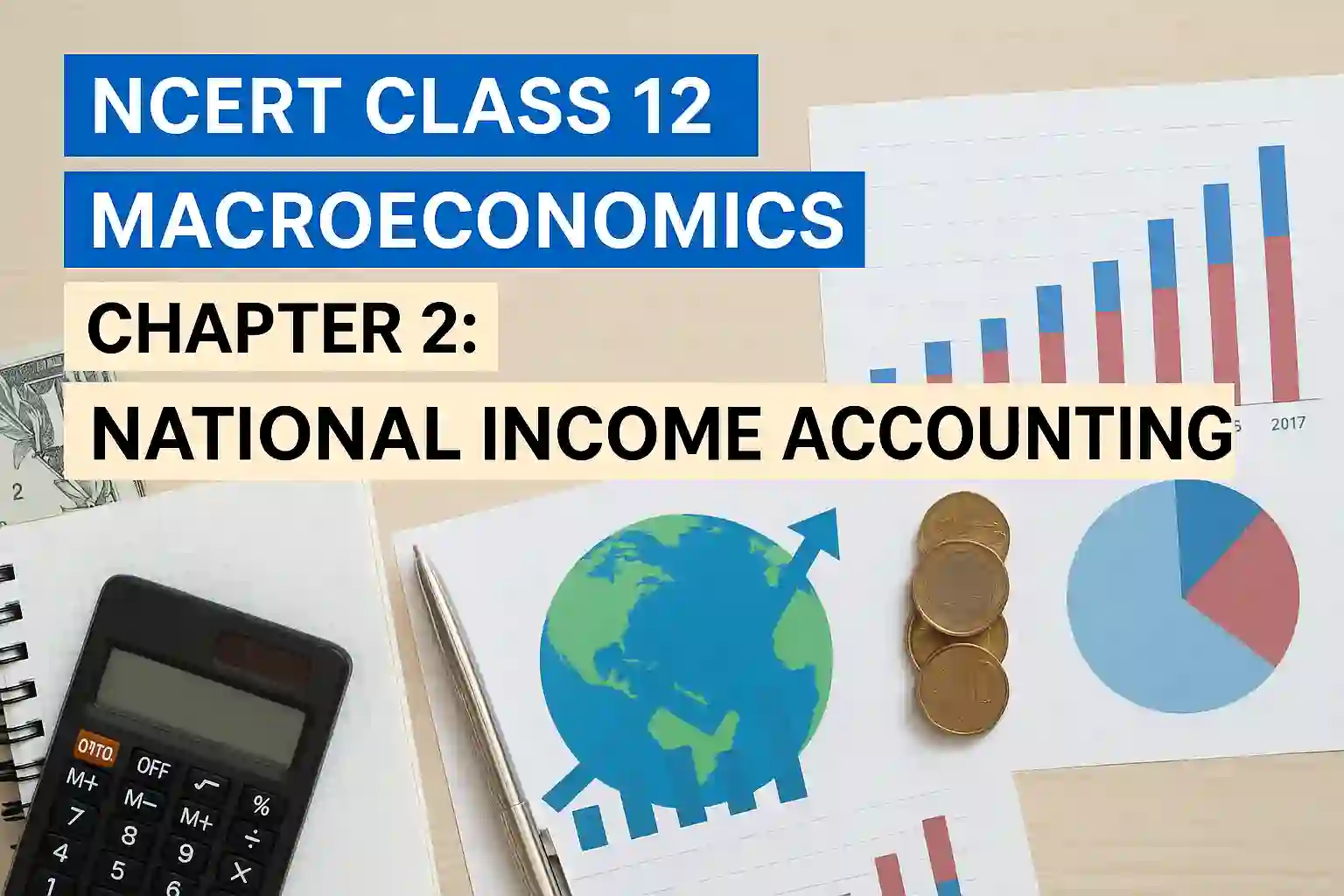Chapter 2 of NCERT Class 12 Macroeconomics is National Income Accounting. This chapter deals with the methods and concepts used to calculate a country’s total income and production. It explains terms like GDP, GNP, NNP, and personal income, and shows how all of these are calculated using different approaches such as the product method, income method, and expenditure method. These concepts are essential for understanding the broader economic picture of any nation.
I’m writing about this topic because I’ve noticed that many students find this chapter tricky due to the multiple terms and formulas involved. However, it’s one of the most important chapters in macroeconomics and regularly features in board exams, both in short answer and numerical questions. If you’re preparing for CBSE Class 12 or competitive exams like CUET, having a clear understanding of national income accounting is a must. This article breaks down the chapter in a simple way and also includes a direct link to the official NCERT PDF for easy access.
What is National Income Accounting?
National Income Accounting is a way of measuring the economic performance of a country. It gives a detailed picture of the income generated within the country and how that income is distributed among the people and sectors.
Some of the most commonly used indicators include:
- Gross Domestic Product (GDP)
- Gross National Product (GNP)
- Net National Product (NNP)
- National Income (NI)
- Personal Income and Disposable Income
These figures help in comparing the economic growth of a country across years and with other countries.
Key Concepts Covered in Chapter 2
1. Domestic Territory and Normal Residents
Before calculating national income, it’s important to define what counts as part of a country’s economy. The chapter explains:
- Domestic territory includes ships, aircrafts, embassies etc. operated by the country
- Normal residents are people and institutions engaged in economic activity in the country, regardless of nationality
This definition helps in distinguishing GDP from GNP.
2. Different Methods of Measuring National Income
There are three main approaches:
- Production Method (or Value Added Method)
It calculates the value added by all industries.
Formula: Value of Output – Intermediate Consumption = Gross Value Added - Income Method
It adds up all the incomes earned by factors of production.
Includes: Wages + Rent + Interest + Profit - Expenditure Method
It totals the expenditure on final goods and services.
Includes: C (Consumption) + I (Investment) + G (Government spending) + (X – M) (Net exports)
Each method arrives at the same figure when done correctly, and students are expected to solve numerical questions based on all three.
3. Important Terms and Adjustments
- Depreciation (Consumption of Fixed Capital)
- Net Factor Income from Abroad (NFIA)
- Indirect Taxes – Subsidies
- Factor cost vs Market price
4. Real vs Nominal GDP
This concept shows the difference between values at current prices and values adjusted for inflation.
Nominal GDP is measured at current year prices,
Real GDP is measured at base year prices.
This helps in comparing the actual growth in output, not just price increases.
Download NCERT Class 12 Macroeconomics Chapter 2 PDF
To study the full chapter in detail and practise all examples and questions, you can download the official NCERT Class 12 Macroeconomics PDF of Chapter 2: National Income Accounting.



















